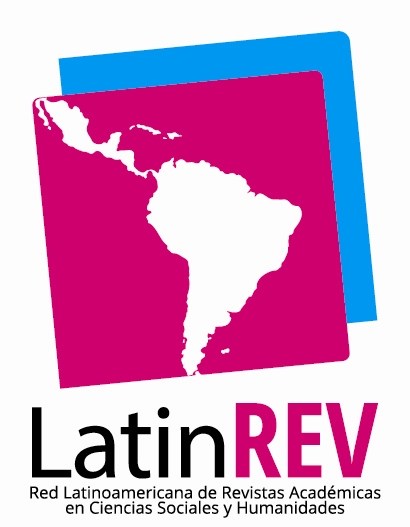Submissions
Submission Preparation Checklist
As part of the submission process, authors are required to check off their submission's compliance with all of the following items, and submissions may be returned to authors that do not adhere to these guidelines.- The manuscript has not been previously published, nor is it being submitted for parallel consideration in another journal.
- The author has not published in Argonautas since 2020, either individually or as a co-author.
- The text is single-spaced; 11-point Arial font for the main text and 9-point Arial font for footnotes; italics are used instead of bold or underlining (except for URLs).
- The file format is OpenOffice, Microsoft Word, RTF or WordPerfect. The manuscript adheres to the stylistic and bibliographic requirements outlined in the "Submissions/Guidelines" section, which appears under the "About the Journal” menu.
- The manuscript contains a title in Spanish of up to 20 (twenty) words, an abstract in Spanish of up to 250 (two hundred fifty) words, and 5 (five) keywords. Each element must have an English translation.
- The maximum number of authors is 4 (four). The manuscript contains the following information about each author: name(s) and last name(s), institutional affiliation up to a second institutional degree (e.g., university, faculty/department), and highest (post)graduate degree.
- The manuscript respects the minimum and maximum extensions according to the section to which it is applying.
- All illustrations, figures, and tables have a title, are consecutively numbered, and their source is specified. They are also placed where they are mentioned in the body of the manuscript.
- References (documents cited in the body of the manuscript) are presented at the end, following the format required by Argonautas. The use of footnotes is limited to clarifying content.
Thematic dossier
This section compiles articles on a central theme announced prior to the call for papers. The call for papers will stipulate the topic of reference, the section coordinators, and the deadlines for receiving articles proposals for the Thematic Dossier. In all cases, the texts must be based on analysis and/or debate in the social sciences and humanities, resulting in a contribution to the specified disciplinary field or subfield. All articles must meet the requirements set forth in the call for papers and the guidelines for authors.
Open-topic articles
This section includes articles dealing with the progress and/or final results of research, theses, or projects, as well as the recording and systematization of educational practices, essays, or monographs focused on working with cases, concepts, and/or authors, among others. Open-topic articles are not determined by any particular content associated to a call for papers; thus, manuscripts intended for this section should provide a disciplinary contribution, foster analysis and/or debate in the social sciences and humanities. Articles for this section will be received throughout the academic year, and priority will be given to those focusing on the education-society landscape.
Reviews
Reviews are texts referring to a recently published work, which express a synthesis and/or debate with the author's thinking. The text includes a descriptive and reflective statement based on the contextualization of the work, the state of the problem, the authors’ career, and related aspects. Reviews that contribute to the education-society debate will be given priority (although not exclusively). Texts intended for this section can be submitted throughout the academic year.
Privacy Statement
Argonautas promotes an open-access policy to scientific and academic literature, based on the conviction that knowledge is a common good and should be available to circulate, be discussed and used for free. For this reason, access to the content is based on the principle of free access, with no fees of any kind. Furthermore, in accordance with the open-access policy, users do not need to register to read the content, and the texts are not subject to embargo periods.
By submitting their work to Argonautas, authors agree that their work may be disseminated through databases under Creative Commons Attribution 4.0 International License, with the aim of increasing the visibility of the publication and its authors.
In accordance with these guidelines, the material may be shared in any medium or format, as well as adapted and transformed, provided that: a) both the author and the original source of publication (journal, publisher, and URL of the work) are cited; and b) the license terms are maintained.
The names and email addresses provided to this journal will be used exclusively for the stated purposes and will not be made available for any other purpose or to any other person.





